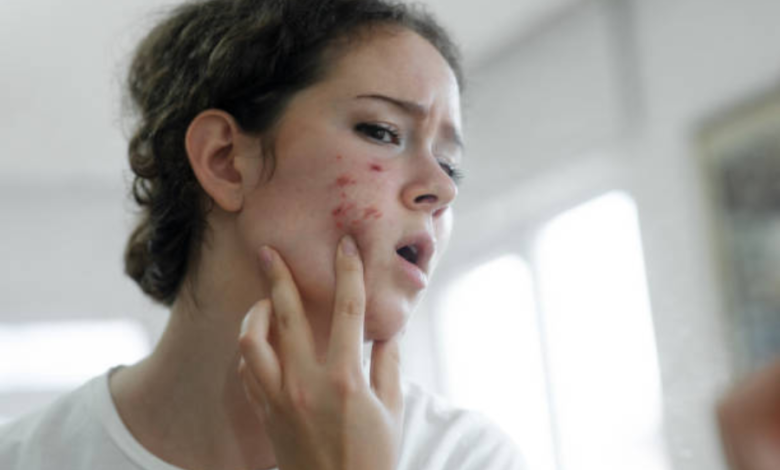What Are the Most Common Pimple Myths?

Pimples are a common skin concern that almost everyone has dealt with at some point in their lives. However, along with their prevalence comes a plethora of myths and misconceptions about what causes them and how to treat them. Understanding the truth behind these myths is crucial for managing and preventing pimples effectively. This piece debunks some of the most common pimple myths and explains how using a pimple patch can be an effective part of your skincare routine.
Myth: Pimples Are Caused by Poor Hygiene
One of the most pervasive myths about pimples is that they are caused by poor hygiene. While it’s true that keeping your skin clean is important, pimples aren’t directly caused by dirt. Pimples form when pores become clogged with excess oil, dead skin cells, and bacteria. Hormonal fluctuations, genetics, and even stress can contribute to these blockages, leading to pimples.
Overwashing your face in an attempt to get rid of pimples can make the problem worse. Excessive washing strips the skin of its natural oils, causing it to produce even more oil in response, which can lead to more breakouts. Instead of over-cleansing, focus on a balanced skincare routine and consider using a pimple patch when a breakout occurs. A pimple patch absorbs excess oil and bacteria from the pimple, promoting faster healing without the need for harsh scrubbing or over-washing.
Myth: Only Teenagers Get Pimples
Another common myth is that pimples are only a problem for teenagers. While it’s true that pimples are most prevalent during adolescence due to hormonal changes, many adults continue to experience pimples well into their 20s, 30s, and even 40s. Adult acne can be triggered by a variety of factors, including stress, hormonal imbalances, and certain medications.
Adults who struggle with pimples should approach treatment with the same care as teenagers. Gentle skincare, a healthy lifestyle, and targeted treatments like a pimple patch can be effective for managing pimples at any age. The pimple patch is particularly useful for adults because it’s discreet and can be worn during the day, even under makeup, making it easy to treat pimples without drawing attention to them.
Myth: Popping Pimples Makes Them Go Away Faster
Many people believe that popping a pimple is the quickest way to get rid of it, but this is far from the truth. Popping pimples can lead to further irritation, inflammation, and even infection. Additionally, squeezing pimples increases the risk of scarring, which can be more difficult to treat than the pimple itself.
Instead of popping pimples, use a pimple patch to treat the breakout. A pimple patch creates a protective barrier over the pimple, absorbing pus and oil while reducing inflammation. This helps the pimple heal faster without the risk of scarring or infection. Plus, the patch prevents you from picking at the pimple, which is a common habit that can worsen the breakout.
Myth: Eating Greasy Foods Causes Pimples
The idea that eating greasy foods directly causes pimples is a widely held belief, but it’s largely a myth. While diet can influence skin health, there’s no direct evidence that eating greasy foods like pizza or fries causes pimples. Pimples are more closely linked to hormonal changes and other internal factors rather than the specific foods you eat.
However, some foods, particularly those with a high glycemic index (like sugary snacks and drinks), can lead to an increase in insulin levels, which may contribute to acne. Maintaining a balanced diet that includes plenty of fruits, vegetables, and whole grains is a good practice for overall skin health, but don’t stress too much about the occasional indulgence. If a pimple does appear, using a pimple patch can help manage it effectively without worrying about dietary slip-ups.
Myth: Sun Exposure Helps Clear Pimples
Some people believe that spending time in the sun can help dry out pimples and clear the skin. While it’s true that the sun can temporarily dry out pimples, prolonged sun exposure can cause more harm than good. UV rays can damage the skin, leading to premature aging and increasing the risk of skin cancer. Moreover, the sun can cause post-inflammatory hyperpigmentation, especially in people with darker skin tones, making pimples leave behind dark spots.
Instead of relying on the sun, use proper acne treatments and wear sunscreen daily. If a pimple does appear, a pimple patch is a safer and more effective way to treat it. The patch not only promotes healing but also shields the pimple from UV rays, preventing further damage to the skin.
Conclusion
Pimples are a common skin issue, but the myths surrounding them can lead to ineffective treatments and prolonged suffering. By understanding the truth behind these myths, you can take better care of your skin and manage breakouts more effectively. Incorporating a pimple patch into your skincare routine can provide targeted treatment for pimples, helping them heal faster without causing additional irritation or scarring. Whether you’re a teenager or an adult, debunking these pimple myths is the first step toward clearer, healthier skin.





